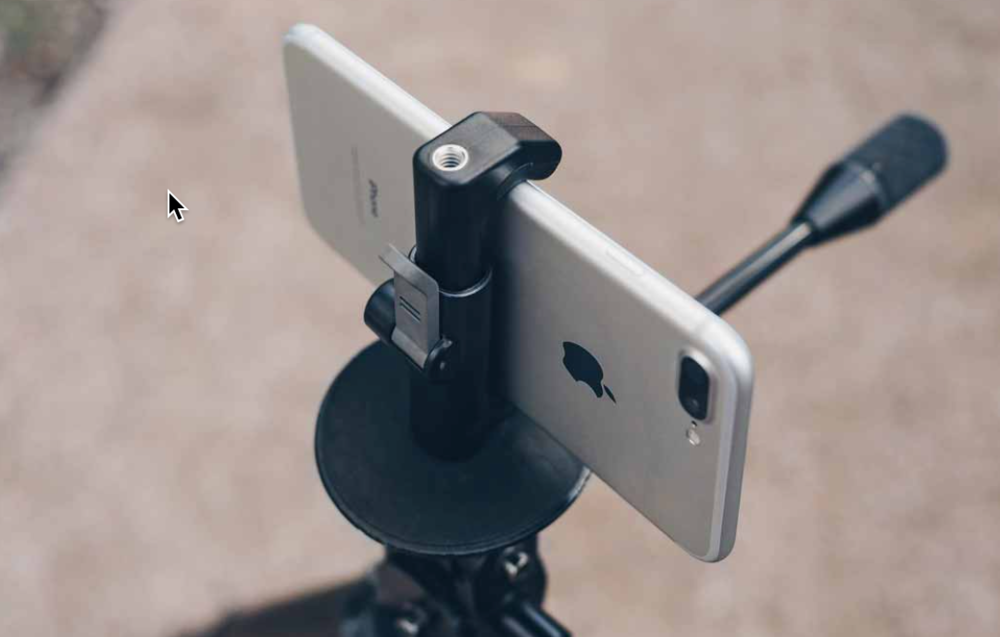
July 4 is the night that all the fireworks fans in the United States love. On Independence Day, we celebrate our independence from England by blowing things up… fireworks, that is. Fireworks photos can be either astoundingly beautiful or a total disappointment depending on how you take them, and today we’re going to give you some hints on how to take really impressive shots of fireworks with your iPhone using the $0.99 Slow Shutter Cam app.
The best results from fireworks photos come from the combination of slow shutter speeds — which allow the full extent of the exploding fireworks to be captured — and a stationary camera. Let’s talk about the second point first. If you hand hold an iPhone, chances are very good that you — and the iPhone — are going to move during the exposure and you’ll end up with a blurry mess.

The best way to stop the blurs is to mount the iPhone on a tripod, and the best way I know to do that is to use a Glif ($28 from Studio Neat). The Glif is a small device that grips an iPhone and includes threaded mount points for attachment to a tripod. I’ve used them since version 1.0, and each successive version just gets better and more useful.
You have a lot of choices for tripods; I prefer larger tripods like the $50 Manfrotto Compact Light (Amazon Affiliate Link) that can fold up to a nice little package, but then expand to almost 5 feet in height. Get the tripod set up in a location where you have a good view of fireworks without people standing in front of you, then slip the iPhone into the Glif and mount it onto the tripod.
Next, get the Slow Shutter Cam app if you don’t already have it installed on your iPhone. The app provides a way to control the iPhone’s camera in such a way that you can slow down the exposures from the normal fractions of a second to many seconds. I’ve used the app before to take star trail photos and take long exposures of moonlit scenery. One reason I like this app more than some of its competitors is that it offers a live preview mode that gives you an idea of how the long exposure will look.
In this case, you’ll find that Slow Shutter Cam has a built-in mode that is perfect for capturing all of the fireworks action — it’s called light trail mode. While most of us aren’t too excited on capturing the upward climb of the fireworks shells, we love the explosions that sometimes last for 5 – 10 seconds. With Slow Shutter Cam, you can point your tripod-mounted iPhone in the right direction, focus with a tap on the dark sky (the app has an automatic exposure and focus lock), and then tap on the Settings “gear”.

You’ll see tabs for the three capture modes of the app – Motion Blur, Light Trail and Low Light. What we want to dp is tap Light Trail to select it, the adjust the Light Sensitivity and Shutter Speed. I like to keep the ISO (think of it as the “film speed”) set on auto, then play with the other two settings. Since most fireworks explosions are over in just a few seconds, you probably want to set the shutter speed to either 4 seconds or 8 seconds. The 15-second exposure time works well if you want to capture multiple airbursts that are happening.
The tough part comes in when you try to click the shutter button and take your photo without shaking the iPhone during the long exposure. Fortunately, Slow Shutter Cam has a self-timer built into it under the settings. The timer can be set to 1, 3, 5, and 10 seconds; I find that using either 3 or 5 seconds works best when shooting fireworks photos. Listen to the launch “boom” of the shells, then tap the shutter button. The shell reaches its apogee after 3 to 5 seconds, then explodes. If you find that the fireworks show is using a lot of high shots, then 5 seconds is probably better than 3.
As an alternative to the self-timer, you can also plug your Apple earphones into the iPhone and use the “+” volume button as an external shutter button. Even better, if you have an Apple Watch there is a companion app that lets you use your watch to “push the button.” However, the Watch companion sometimes seems to have issues with connecting to the iPhone…so take along that set of EarPods just in case.
Oh, and one final tip — clean the lens on your iPhone before taking your fireworks photos. Our hands tend to get grease on the lens, and any blurriness that’s cause by that will be exacerbated by the longer exposure. I use a little lens cleaner on a piece of tissue to wipe off the iPhone lens before taking pictures.
Unlike the old days of film cameras where you might take 36 photos of fireworks only to find that all of them were horrible, you can tell how your photo turned out immediately after it has been taken. Slow Shutter Cam display the final product, then asks if you wish to save the picture to your Photos library.
We’d like to see how you do with your iPhone and Slow Shutter Cam; send us your best photos after the 4th of July holiday and let us take a look!
